Created by Sporcle
Check out their website for more fascinating quizzes
Follow them on Twitter @sporcle
Like O-Posts on Facebook
You can also follow O-Posts on Twitter @OPosts
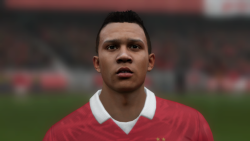
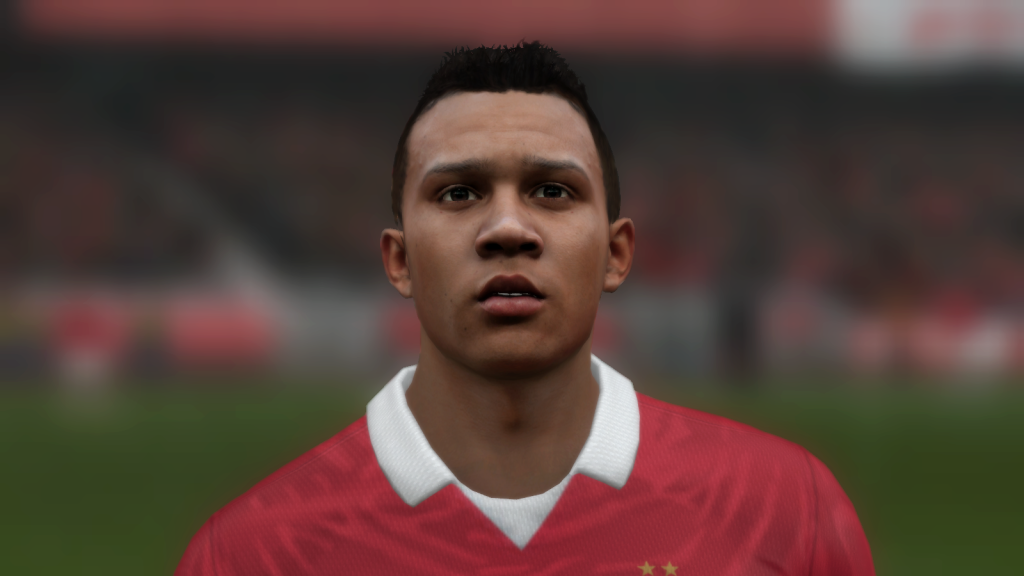
FIFA gets better every year. This time around EA has made some major changes in the career mode, which has received many positive responses. Tons of players who quit Career mode in FIFA 15 should look forward to playing Career mode more often and with enthusiasm in FIFA 16.
We have a list of the best young players in FIFA 16, which you can use to build a strong squad or make a huge profit in the transfer market.
Luciano Vietto – ST - 21 Years Old
Overall Rating: 79
Potential Rating: 88
Best attribute: Pace of 89
The 21 year old has been called and labelled the next Aguero. He already had a rating of 78 in FIFA 15, which has increased to 80 in the latest edition.
Breel Embolo – ST – 18 Years Old
Overall Rating: 76
Potential Rating: 87
Best attribute: 90 in Sprint
Embolo is the one player every scout in FIFA 15 career mode want you to sign. This insane talent has improved a lot this season, which has enhanced his FIFA 16 overall rating to 76 from 74.
Nabil Fekir – CAM – 21 Years Old
Overall Rating: 80
Potential Rating: 88
Best attribute: 89 in Balance
Nabil Fekir has improved a lot this season scoring about fifteen goals and assisting ten more in reality with his club, Lyon. His FIFA stats has boosted to potential of 88.
Memphis Depay – LW – 21 Years Old
Overall Rating: 80
Potential Rating: 87
Best attribute: 90 in Sprint Speed
Memphis Depay is definitey going to be one of the most used players in FIFA 16 as he has successfully moved to Manchester United. The mini-Ronaldo will have a potential to improve to up to 87 in FIFA 16.
Raheem Sterling – CAM - 20 Years Old
Overall Rating: 82
Potential Rating: 88
Best attribute: 92 Sprint Speed
Manchester City’s big-money signing. His move will definitely affect FIFA 16 Ultimate Team as there are very few Man City-supporting gamers playing FIFA 16. As far as his potential stats are concerned, they remain the same as FIFA 15.
Youri Tielemans – CM - 18 Years Old
Overall Rating: 75
Potential Rating: 89
Best attribute: 77 in Passing and Balance
There are many top players in the centre-midfielder category, but Tielemans is definitely one to mention as he has a potential of an 89 rating in FIFA 16.
Luke Shaw – LB – 19 years old
Overall Rating: 76
Potential Rating: 86
Best attribute: 84 in Pace
There are not a lot of highly rated left backs in FIFA 16 and with Shaw having a potential of 86, he will be the most traded left back in the game.
Hector Bellerin – RB – 20 Years Old
Overall Rating: 70
Potential Rating: 86
Best attribute: 89 in Acceleration
The Arsenal speed merchant is going to be the right back with the highest potential in the game. His overall can increase from 70 to 86.
Marquinhos – CB – 21 Years Old
Overall Rating: 81
Potential Rating: 89
Best attribute: 92 in Marking
FIFA 16 has the same player what FIFA 15 had as the U21 player with the biggest potential. Marquinhos was the most traded player in FIFA 16 Career mode and he is going to make a great impact in transfer market like he did in FIFA 15.
Simone Scuffet – GK – 21 Years Old
Overall Rating: 71
Potential Rating: 86
Best attribute: 80 in Reflexes
There are not a lot of good under-21 goalkeepers in FIFA 16, but Scuffet makes it just in time to book his place in the list of the Best Under-21 players in FIFA 16.
Written by Charchit Dahal
Follow Charchit on Twitter @CharchitDahal
Like O-Posts on Facebook
You can also follow O-Posts on Twitter @OPosts
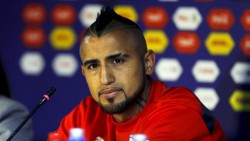
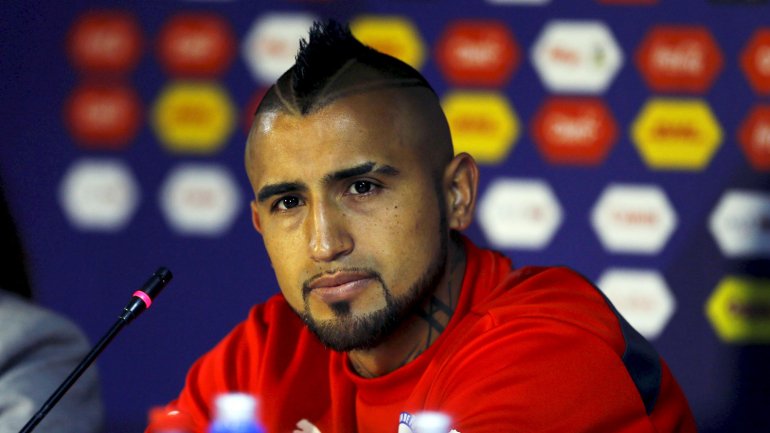
Bayern Munich’s chief executive Karl-Heinz Rummennigge wasn’t at the launch of his club’s new kit to hear the jeers from a number of supporters, but he did say he expected it. “I don’t know if they were booing Bayern Munich or just the transfer itself” he told Bild, referring to the exit of Bastian Schweinsteiger to Manchester United.
The midfielder who had won everything with Bayern over 13 years and the friendly face who drank in the local pub and played with friends in the park, Schweini as he is endearingly known to Bayern loyalists, was suddenly leaving Bavaria, where he holds a saint-like status, behind.
Rummennigge, who himself served the German giants for a decade, would have empathised with Bayern’s supporters and would have braced himself for the reaction. He would be aware Schweinsteiger would have been extremely difficult to replace, if not for his expertise on the pitch but for the admiration and worship he received off it.
Juventus’ 28 year old Arturo Vidal may have been identified as the on-field replacement however, in a move that at first glance is most unlike Pep Guardiola. Analyse it to more detail however and it takes on greater levels of curiosity.
Anathema to the graceful ball-movers that the Spaniard usually prefers, Vidal will bring with him tenacity and the raw aggression that earned him 49 bookings in his four years in Italy. Guardiola may be directing Bayern to a shift in style, but with the 44 year old entering the last year of his contract at the Allianz Arena those fond of a conspiracy theory may query if it is Bayern preparing for life without the coach.
If Guardiola is to bow out at the end of his three year deal his time will be unfulfilled if he fails, at the third attempt, to secure the Champions League that Jupp Heynckes discovered couldn’t prevent him from being shuffled aside to make way for the Catalan.
The box of league supremacy has been ticked emphatically, but humbling defeats to Spanish opposition on the continent has left a sour taste in the mouths of the hierarchy who may have even handed Guardiola a show of strength by sanctioning the sale of Schweinsteiger. The politics may be uncertain, but this coming season is undoubtedly pivotal for Guardiola.
The €30 million signing of Brazilian attacking midfielder Douglas Costa from Shakhtar Donetsk suggests he is looking for an injection of pace and he would also get that in abundance from Vidal who operated as the legs for Andrea Pirlo at Juventus.
With Schweinsteiger the one to be offloaded from glut of Bayern midfielders who all appear so similar; Phillip Lahm, Thiago Alcantara, Javi Martinez and Xabi Alonso, Vidal will offer much-needed bite and steel. Guardiola may envisage the Chilean, supported by Alcantara, doing the same dogged shielding job he did for Pirlo at Juve with Alonso.
Given his senior Chile debut by the revolutionary Marcelo Bielsa and a vital cog in the exciting teams of the 2010 and 2014 World Cups, the latter under Jorge Sampaoli which eliminated Spain and nearly did for Brazil, Vidal’s education in the persistent pressing game will appeal to Guardiola who coached it so effectively at Barcelona.
He attempted the most tackles (134) at Juventus last season and won the ball back through challenges and interceptions at a rate of 4.7 per game, stats that will be alluring to Bayern’s studious coach.
Vidal also won this year’s Copa America under Sampaoli’s tutelage, earning himself a place in the team of the tournament, a consolation prize for the failure to secure a Champions League for Juventus under Massimiliano Allegri whose focus on relentless hard-work secured a league and cup double.
It was Vidal’s fourth successive league title in Italy and a £28 million move, with Juve looking to recoup funds after renovating their squad with Paulo Dybala, Mario Mandzukic, Simone Zaza and Roberto Pereyra in a spree which has exceeded £60 million, will see him join a side who enjoy a similar level of domestic dominance. It will be on the continent that will provide the true test of his pedigree and mettle.
It will not always be pretty; Vidal is a persistent fouler and will too often walk the tightrope between the yellow and a second red card, but perhaps for once the idealist in Guardiola isn’t searching for aesthetics.
He will be asking Vidal to prowl fiercely around his midfield to allow his possession-artists to operate, and to drive an irrepressible will to win, the same kind that got Carlos Zambrano of Peru sent-off in the Copa America semi-final. With Vidal in it, Bayern won’t have the same team that bowed with a whimper to both Real Madrid and Barcelona over the course of the past two seasons.
For a reasonable fee in this current market, Vidal will provide a satisfactory replacement for Schweinsteiger and is three years the German’s junior. Though regardless of how much of a fighter he is on the field or how much he work he ploughs through in his midfield station, replacing Schweinsteiger’s Bavarian void will be way beyond him.
Written by Adam Gray
Follow Adam on Twitter @AdamGray1250
Like O-Posts on Facebook
You can also follow O-Posts on Twitter @OPosts

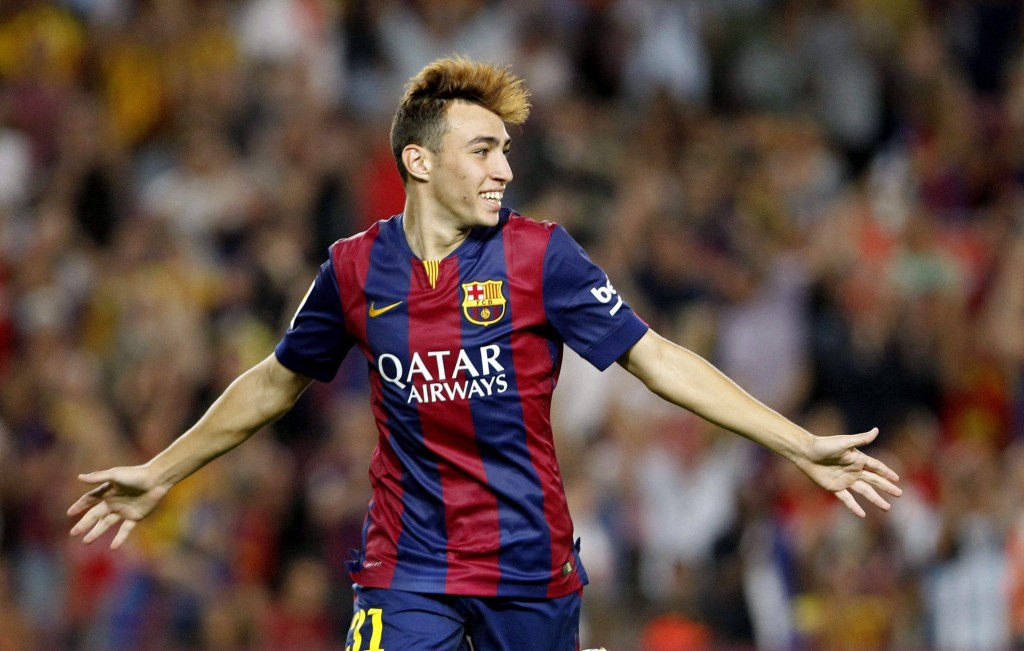
For the second summer in succession, one of Barcelona’s most promising young talents is being linked with a move away from the club. If reports are to be believed, Munir El-Haddadi is a target for many top European clubs including Arsenal and Chelsea with the Gunners supposedly in pole position for his signature.
Many football fans may not be too familiar with the player known simply as Munir; after all, he only made his debut for the Blaugrana B team in March 2014 and has only made ten senior league appearances since then. So what is all the fuss about? Why are so many teams interested in the youngster and would the Catalonians be willing to sell?
Munir was born to parents of Moroccan origin and raised in a small town northwest of the Spanish capital. As a child, his favourite team was Real Madrid. His prolific goal scoring record as a youngster eventually secured him a place in the youth ranks of Atletico Madrid at which point he ditched any previous allegiances. Aged just 15, he was sent on loan to CF Rayo Majadahonda where he bagged an incredible 30 goals in 29 matches in the Tercera División.
His record in the Spanish fourth tier drew attention from his boyhood team across the city, but it was Barcelona who made the only firm approach for his services. After just a year at Atletico, Munir was on the books at the Catalan club and made his debut at youth level.
His style of play and ability to score goals soon attracted lazy comparisons to other top players including Lionel Messi. At UEFA youth league level, Munir averaged a goal a game for Barca and was voted the outstanding player in 2013-14. During a game against Benfica in July 2014, he became a social media hit after scoring from the halfway line.
His performances prompted new coach Luis Enrique to give the youngster first team opportunities during the 2014-15 season. He made an instant impact by scoring on his debut in the 3-0 win against Elche at the Camp Nou and made a further nine appearances in the league. He also featured six times in the Copa del Rey and Champions League campaigns.
With Pedro’s future in doubt, it seems crazy that the Catalan club would sell a player with such talent and potential. Any new players that Luis Enrique recruits this summer will not be able to play until January and as a result, Munir will be a valuable asset to the squad in the coming months. The coach has also expressed his intention to continue developing the player so if he does move, a loan would be most likely.
In the unlikely event that a permanent transfer does occur, Arsenal would be the most likely destination. Arsene Wenger has previously taken Barca youth players Jon Toral and Hector Bellerin to the Emirates and of course Cesc Fabregas made the same move eleven years ago.
The one thing that is certain is that Munir has a big future ahead of him and wherever he ends up; he is set to be a star.
Written by Neil Morris
Follow Neil on Twitter @nmorris01
Like O-Posts on Facebook
You can also follow O-Posts on Twitter @OPosts

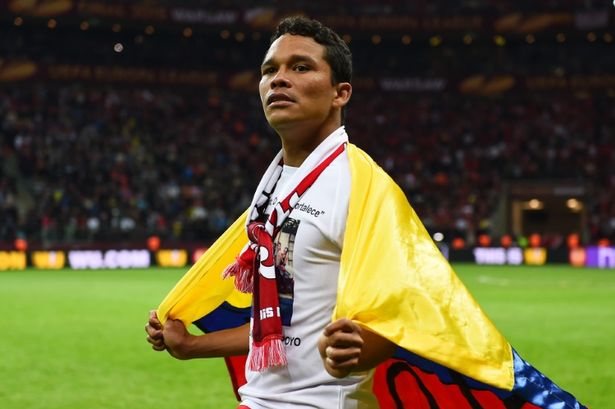
AC Milan announced last month that they have reached an agreement to sign Sevilla striker Carlos Bacca, subject to a medical.
The Italian giants met the buyout clause in his contract that is reported to be set at €30 million.
Let’s take a closer look at the 28-year-old Colombian.
Background
What can he offer AC Milan?
The Rossoneri’s physical presence up front has been lacking, probably ever since the departure Mario Balotelli last summer. The defences in Serie A had nothing to be frightened of - apart from Jeremy Menez who managed to bag 16 league goals.
Bacca has a robust nature about him, an element AC Milan certainly missed last year. A key strength is his movement, his ability to draw defenders then exploit the space in behind has become one of his signature moves.
Adept at leading the line, or dropping deep to receive the ball before driving deep into the heart of enemy territory, Bacca keeps defences on their toes for the full 90 minutes.
AC Milan didn’t splash the cash just for his work rate, the Colombian should offer plenty of goals to Sinisa Mihajlovic’s men too.
Bacca scored his 20 goals from just 59 shots last season, meaning he maintained a conversion rate of nearly 34% - scoring with more than one in every three shots. That rate was the best of all attackers in La Liga last season – significantly better than Ronaldo, Messi and Neymar.
With this work rate and intelligence along with a deadly eye for goal, he is certainly a striker to be feared and could be an instant hit in Serie A.
Written by Serie A Writer
Follow Serie A Writer on Twitter @SerieAWriter
Read more of Serie A Writer’s articles at www.voicingcalcio.com
Like O-Posts on Facebook
You can follow O-Posts on Twitter @OPosts
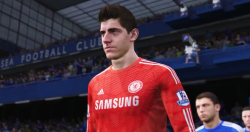
The FIFA season has started and this is the time for you to boost your team. It doesn’t matter if you are playing career mode or FUT 16, your team needs a good goalkeeper.
We have made it easy for you as we have here a list of the top 10 goalkeepers in FIFA 16.
1. Manuel Neuer
Overall Rating: 90
Best attribute: 92 rating in Kicking
The World Cup winner and Ballon d’Or nominee is definitely the best keeper in FIFA 16. Neuer has pulled up some insane saves this year which has resulted in his rating boost to 90 from 88.
2. David De Gea
Overall Rating: 86
Best attribute: 89 rating in Reflexes
De Gea has been Manchester United’s best player this season, so no wonder Real Madrid desperately want him. We have seen his rating boost from 83 to 86 as he holds insane stats for reflexes and kicking.
3. Thibaut Courtois
Overall Rating: 86
Best attribute: 90 rating in Reflexes
The Chelsea custodian is definitely one of the best in England. Courtois can develop into the world’s best if he continues to perform this well again next season. He is probably going to be the most bought player in the FUT 16.
4. Claudio Bravo
Overall Rating: 85
Best attribute: 88 in Reflexes
Bravo won the treble with Barcelona and Copa America with Chile making him the most successful goalkeeper this year. All this success has helped his FIFA 16 stats as he is boosted to 85 from 81.
5. Gianluigi Buffon
Overall Rating: 85
Best attribute: 88 rating in Diving
The Juventus legend is certainly ageing, but that does not stop him from being at his absolute best. He is definitely going to be popular among Italian FIFA players.
6. Hugo Lloris
Overall Rating: 84
Best attribute: 87 rating in Positioning
Hugo Lloris is one of the most consistent goalkeepers playing in the Premier League. The French goalstopper has the same rating he had in the previous version of the game.
7. Joe Hart
Overall Rating: 84
Best attribute: 84 rating in Kicking
Manchester City and England goalkeeper Joe Hart had a pretty successful season despite his team’s underwhelming performances. He made some game changing saves, which helped secure a Champions League spot for his club. He is already popular among English gamers.
8. Petr Cech
Overall Rating: 84
Best attribute: 83 in Reflexes and Handling
The former Chelsea man still has a lot of top class goalkeeping left in him. And, this is the reason why Arsenal signed Cech. He is going to be famous with fans of both London clubs in FIFA 16 (more likely among Arsenal supporters) as he remains one of the best goalkeepers in England.
9. Diego Lopez
Overall Rating: 83
Best attribute: 88 rating in Handling
The AC Milan goalkeeper has been very profound for his club this season. He has been able to save plenty, including in one on one situations, which is why his stats in FIFA 16 have been boosted.
10. Roman Weidenfeller
Overall Rating: 83
Best attribute: 85 rating in Positioning
Weidenfeller has been one of the most consistent goalkeepers for Dortmund. With game saving reflexes, which was vital for his club in the latter phase of the season, the Germany international definitely makes it into our top 10 list.
Written by Charchit Dahal
Follow Charchit on Twitter @CharchitDahal
Like O-Posts on Facebook
You can also follow O-Posts on Twitter @OPosts
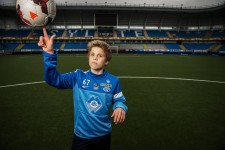
At 14, Tobias Svendsen had to get permission by the Norwegian FA to appear in a third tier game for Molde’s reserve team. Just a year later, he got his debut for the reigning champions in the cup.
The now 15-year-old midfielder is living in the shadow of his 17-year-old brother Sander Svendsen who has established himself in the first team, but Tobias is following not far behind.
QUICK FACTS:
Name: Tobias Svendsen
Date of birth: 31.08.2024 – Age: 15
Position: Midfielder
Club: Molde FK
Key strengths
His low centre of gravity, exquisite first touch, great understanding of the game and quick feet perfectly fits the bill for a modern central midfielder. He is very capable in small spaces, extremely difficult to get the ball off and is considered to be an aggressive midfielder with decent tackling abilities in defensive positions.
Molde manager Tor Ole Skullerud has on multiple occasions praised Tobias but he is keen to point out that they will not rush his development, especially as he is so young and has more physical growth to do.
“He has all the attributes to become a first team regular here at Molde. He is far ahead of his age in every way. It is still impossible to predict how far he will reach. Tobias has great potential but first he must get peace and quiet to develop,” Skullerud said to Norwegian press.
Stats
After Svendsen appeared in the 4-2 win against Rosenborg 2 at the third tier of Norwegian football over a year ago, he got a few appearances during the first team’s pre-season last winter. Then back in April 2015 he was handed his debut for the first team in the first round of the cup, a match Molde in the end won 2-0.
Considered an exceptional talent Svendsen was scouted at the age of 11 by Ajax. In fact, it was the younger of the Svendsen brothers that got the pair on the Dutch club’s radar when he was just 11, which two years later lead to his first of many trips to Amsterdam to train with the club.
For the time being Tobias is only thinking about becoming a better footballer, despite interest from Ajax. Claiming he is ‘too young’ to go professional abroad, Tobias told Norwegian press that it would be difficult to turn down an offer from Ajax ‘in a couple of years’.
“I have been abroad and seen how professional everything is, so yes, it is really tempting. I am too young to do that now, but of course it is a dream. If I receive an offer when I am 17 I would probably accept,” he said.
Written by Lars H. Thomesen
Follow Lars on Twitter @LarsHT
Like O-Posts on Facebook
You can also follow O-Posts on Twitter @OPosts